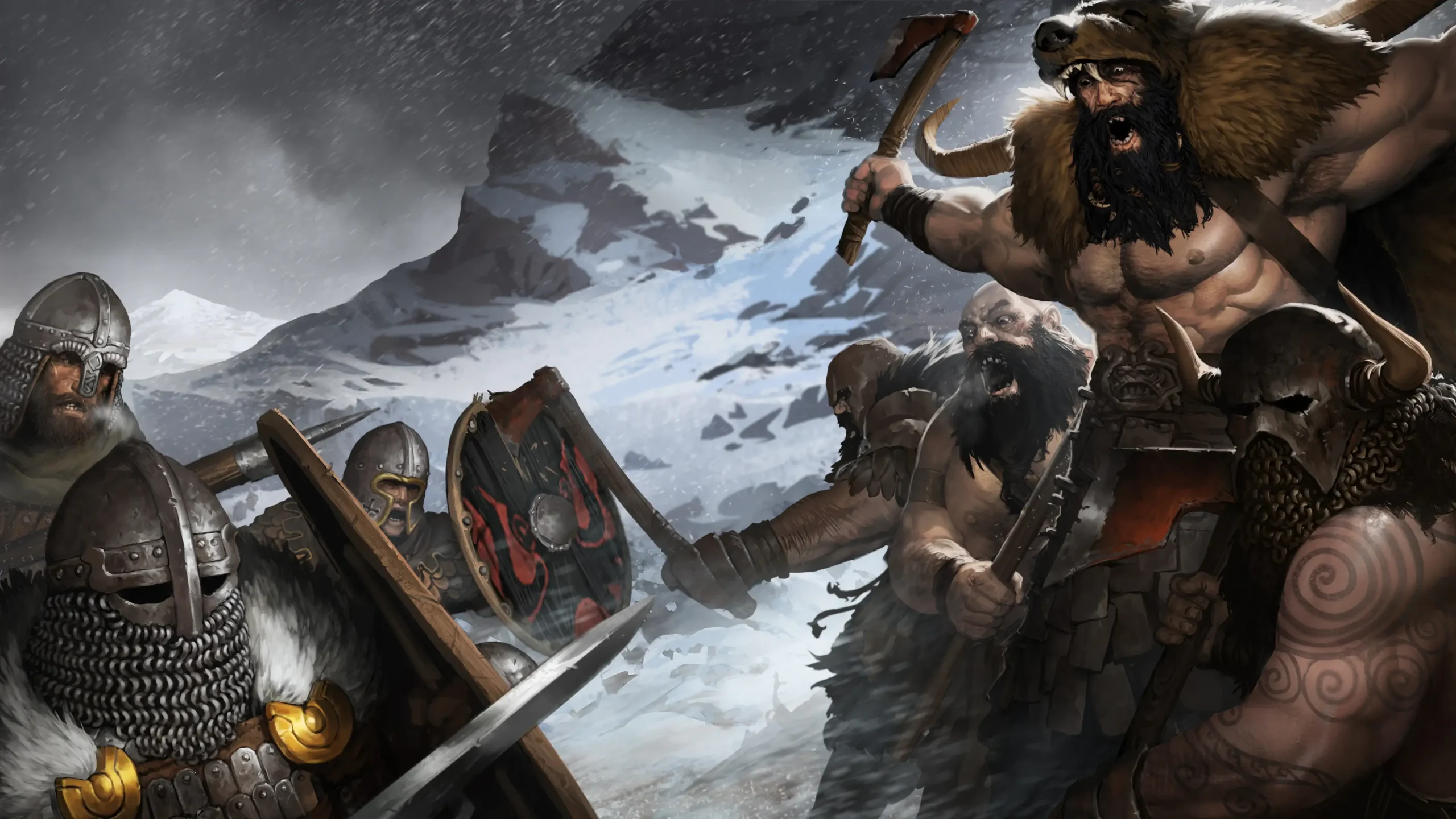In recent years, we’ve witnessed a significant evolution in video games, particularly in turn-based games. Much of this innovation stems from indie developers who, with great originality and a dash of madness, manage to introduce innovative and engaging mechanics that often become benchmarks of the genre, inspiring many other game studios.
It started with classic tabletop games and eventually evolved into the video games that we know and love today. From hardcore, turn-based RPGs such as Darkest Dungeon to classics such as Worms: Armageddon, these are just some of the best combat systems in turn-based games.
Slay The Spire
It’s hard to believe there’s someone who doesn’t know Slay The Spire. This turn-based rogue-lite uses the deck-building mechanics of popular tabletop games such as Dominion to create engaging card-based battles against a variety of fantasy monsters. Although Slay The Spire wasn’t the first to do this, it was arguably the first to streamline the deck-building rogue-lite into an accessible experience.
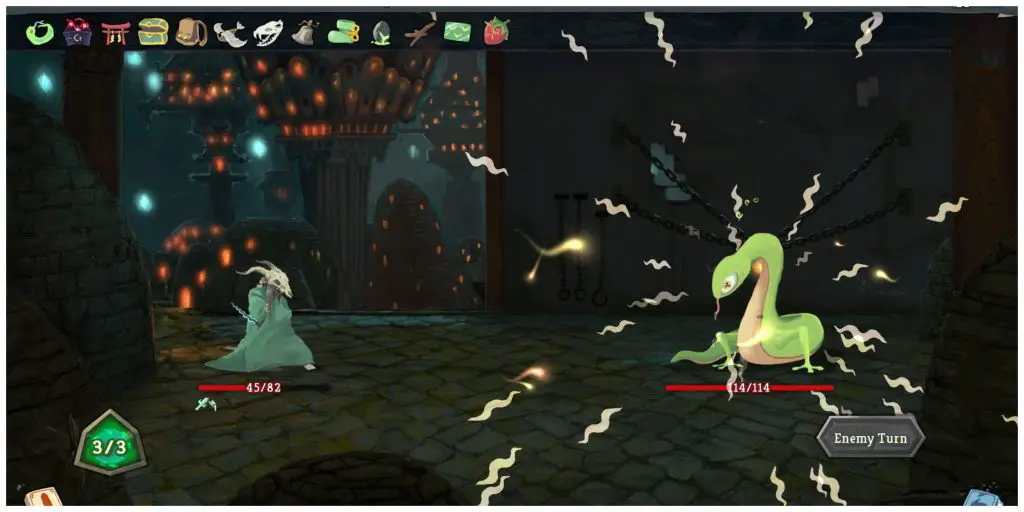
In Slay The Spire, players pick a unique playable character (with their own distinct set of cards) and set out on a slow climb up a deadly tower full of monsters, selecting nodes on a map to progress further and further up the titular Spire. Combat is easy to learn but hard to master, with players selecting cards from their hand in a turn-based fashion, dealing damage, applying status effects, and putting up shields to defend themselves from enemy attacks.
While this doesn’t sound particularly innovative or unique, Slay The Spire’s gameplay loop is remarkably tight and well-crafted. The joy of this battle system comes specifically from the act of building a deck, which is facilitated by allowing players to gain a new card after every successful combat.
Darkest Dungeon
This grim-dark, turn-based rogue-lite RPG is a hardcore dungeon-crawler dripping with Lovecraft-inspired horror. Darkest Dungeon is a thematic and atmospheric experience through-and-through, but its turn-based battle system is arguably what makes it so fun to play.
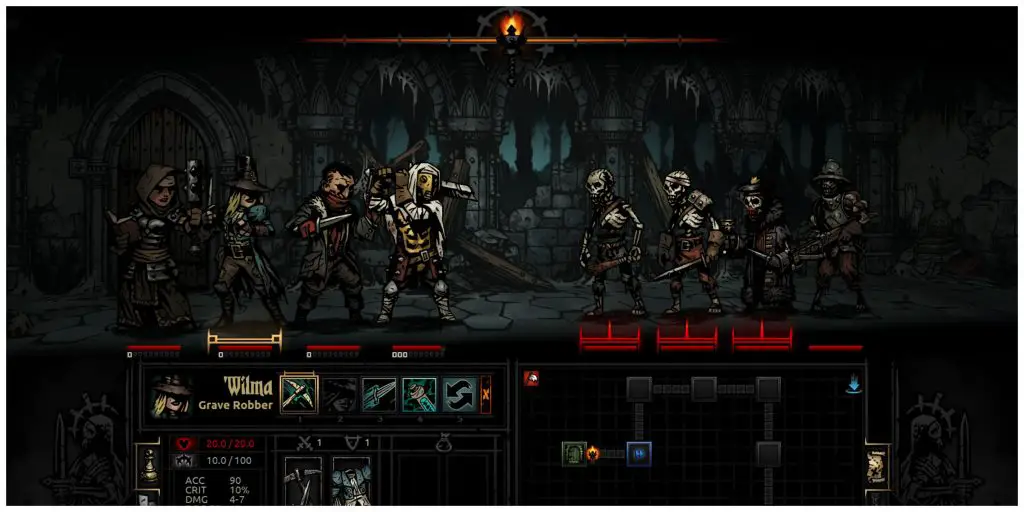
In Darkest Dungeon, players gather a party of four rag-tag heroes (each of which can be one of all manner of unique classes) and send them down into a dark, monster-filled dungeon. Once there, they’ll explore the dungeon with their ever-dwindling torchlight as their characters become increasingly stressed, all before engaging in challenging turn-based combat.
At any one time, each character in Darkest Dungeon has a set of four abilities. These abilities, combined with any equipped trinkets, are what make each character unique. Each ability can only be used from certain positions in the squad’s ranks, making positioning a massive factor despite the game’s 2D, side-on perspective; add to that Darkest Dungeon’s dual health bar system, in which players must worry about both the physical and mental health of their characters, and Darkest Dungeon’s battle system becomes an intricate puzzle.
Cassette Beasts
Cassette Beasts is a Pokemon-inspired, monster-collecting, open-world indie RPG that features a vibrant visual style that combines 3D environments, pixel-art sprites, and illustrated portraits to great effect. However, it’s the game’s unique twist on the classic monster-collector battle-system that allows it to distinguish itself.
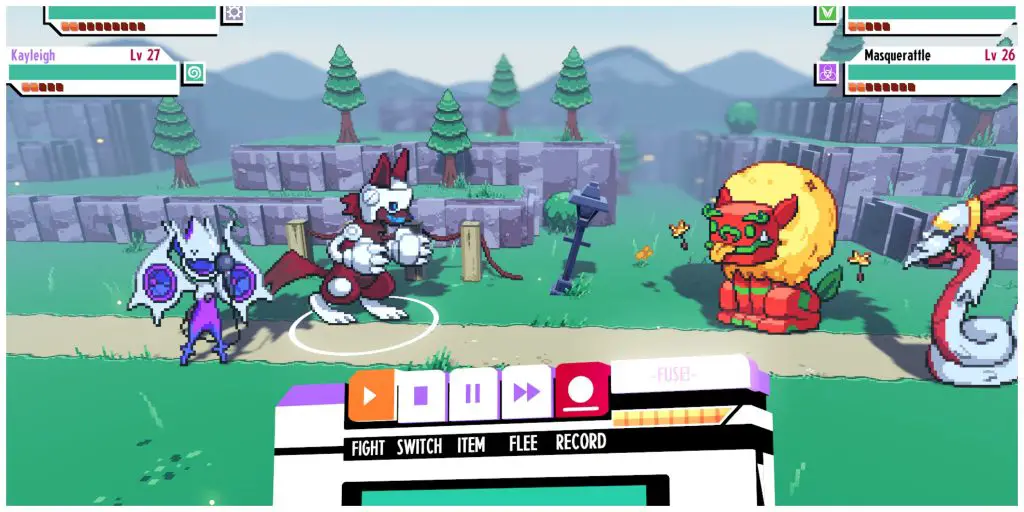
In Cassette Beasts, players explore and collect creatures in the usual monster-collector fashion, though with a thematic twist; instead of collecting monsters, players record them on cassette tapes to take on their form. However, Cassette Beasts also features a mechanical twist in the form of its Fusion System.
Cassette Beast’s Fusion System allows players to combine two monsters together to produce a unique form in battle. This brilliant addition to an otherwise straightforward battle system allows Cassette Beasts to distinguish itself from the obvious Pokemon comparisons.
Battle Brothers
It is one of the best-ever open-world sandbox RPGs that tasks players with running their own mercenary company in a dark, low-fantasy setting. In the game, players gather their company of mercenaries and take on contracts across the land, most of which involve players battling enemies in tactical turn-based combat.
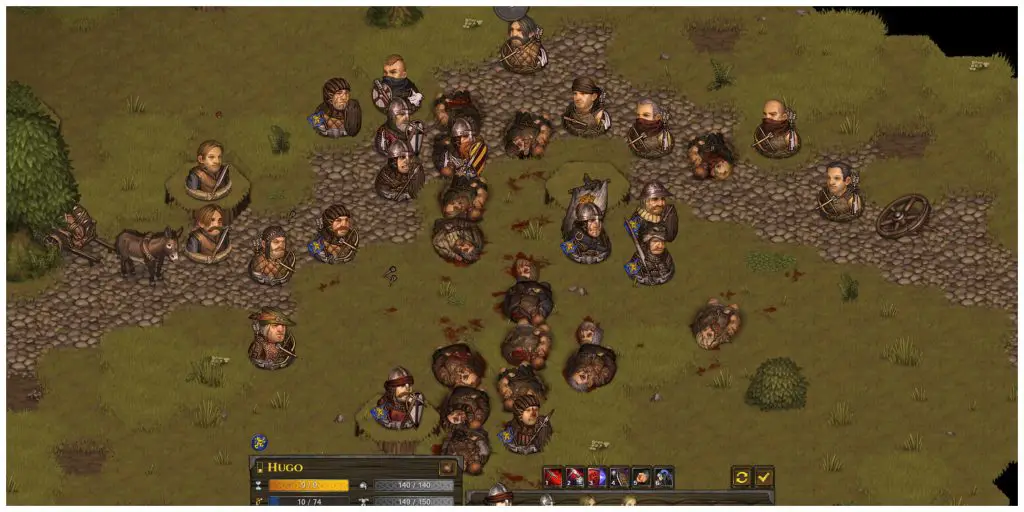
The combat of Battle Brothers revolves around tactical positioning, the careful use of both ranged and melee attacks, and a predictable morale system. Thanks to its unforgiving combat and deep RPG-styled character progression, Battle Brothers can be brutally difficult, especially on harder-difficult settings.
Every character in Battle Brothers has a variety of statistics, from their Resolve that controls how quickly their morale breaks, to their Initiative which controls how soon they act every turn. While not overly complex, hiring and building competent characters is an important aspect that adds depth to Battle Brothers’ combat.
Worms: Armageddon
There are several entries in this iconic turn-based strategy franchise, but Worms: Armageddon is arguably one of the best. Regardless, the battle system of Worms is an accessible, fun-first system that has little-to-no regard for competitive balance. Thankfully, Team17 kept this design for most if not all of the Worms games.

In Worms, players build a team of the titular Worms and battle in various wacky, fully-destructible environments. What makes Worms’ combat system great, however, is the variety of goofy weapons and the way they interact with both the environment and the Worms themselves.
It’s not uncommon for a Worm to go flying after getting caught in the blast of an explosion, survive the hit, and then tumble off a cliff and drown. This light-hearted, fun-first combat system is especially fun when playing with friends.
Final Fantasy: Tactics
This dramatically different Final Fantasy game features turn-based, tactical grid-based combat with a brilliant old-school pixel-art aesthetic. The isometric, grid-based system took Final Fantasy in an entirely new direction and allowed newcomers to jump on board, though its deeply tactical and sometimes convoluted systems didn’t help its approachability.

Final Fantasy Tactics’ battles take place on 3D battlefields from an isometric perspective, allowing players to rotate their cameras to get a better view. The game’s job and skill system adds some depth to the gameplay outside of battle, with team composition playing a large part in the player’s success.
The sheer amount of options that Final Fantasy: Tactics provides, along with its deeply tactical and distinctive battle system amplified by its variety of jobs and skills, provides a strategic combat system that constantly keeps players on their toes. While some Final Fantasy fans may prefer other combat systems from the iconic series, Final Fantasy: Tactics is arguably one of the best.
Sea Of Stars
It is a nostalgic RPG that takes inspiration from old-school classics such as Chrono Trigger and wears its inspirations on its sleeves while maintaining a distinct look and feel. Aside from its combination of old-school pixel art and modern, dynamic lighting, Sea Of Stars also features a unique turn-based combat system that stays in line with other RPGs while simultaneously feeling like a fresh experience.

In Sea Of Stars, players frequently engage in tactical, turn-based battles with a unique twist; when using actions, players use animation-based, timed inputs to increase their effectiveness. Sea Of Stars also features a distinctive combo system, as well as a unique “lock” system that allows players to stagger enemies by using specific attacks.
Divinity: Original Sin 2
Developed by Larian Studios, the team behind Baldur’s Gate 3, Divinity: Original Sin 2, is a sprawling RPG with a tactical, turn-based combat system. It is also a party-based RPG with plenty of character customization and depth, with many strategic decisions happening before combat has even started.

However, the combat itself remains deeply strategic, and success relies on the careful execution and efficient use of each character’s turn. What makes Divinity: Original Sin 2’s combat so great, however, is its intricate systems for elemental effects.
Each battlefield is ripe with environmental hazards to take advantage of, and many characters have abilities that can take advantage of the various elements, making Divinity: Original Sin 2 as much about ingenuity and positioning as it is about threat assessment.
SteamWorld Heist
This swashbuckling adventure combines aspects of the sci-fi Western Firefly with a Steampunk aesthetic and world. However, this distinctive look and feel are not the only things that make SteamWorld Heist unique.
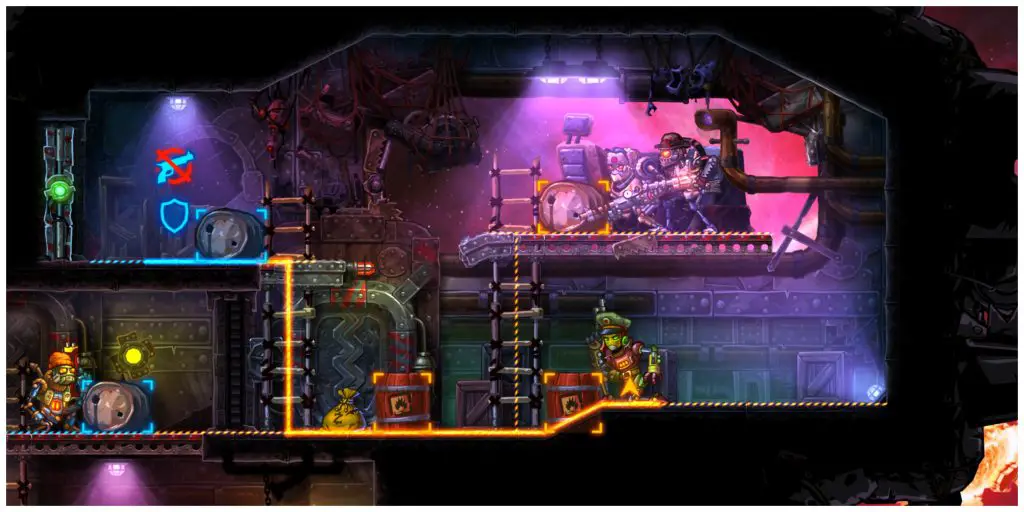
The combat of SteamWorld Heist is a turn-based system like no other. In the game, players engage in tactical shootouts with their rusty robot crew, each of which has their own unique skills. Unlike most turn-based games, however, SteamWorld Heist has players manually aiming each shot.
This unique system allows players to execute carefully placed trick shots by bouncing bullets off of the walls. The addition of manually aiming and the ability to trick-shot foes makes the combat of SteamWorld Heist consistently fast-paced, allowing for an action-packed experience that remains tactical throughout.
Into The Breach
Subset Games, developers of the smash-hit indie game FTL: Faster Than Light developed this combination of rogue-lite, turn-based tactics, and puzzle mechanics. Into The Breach, however, is a very different beast.

Into The Breach puts players in control of a squad of three Mechs, defending civilian buildings from a variety of alien creatures. Combat plays out on a grid in a turn-based fashion, with the player taking all of their moves before the enemies.
However, Into The Breach stands out because the enemies frequently target the buildings instead of the player’s Mechs; these buildings are the player’s health, and losing them to the aliens can be fatal. Furthermore, Into The Breach provides players with all the information they need, including the enemies’ turn order, what they’re going to do, and whether they’ll die before they get the chance to act.
This generosity of information, along with a generous undo button, allows players to puzzle out the perfect turn. This arguably makes the combat system of Into The Breach one of the most distinctive and tactical turn-based experiences on the market.
Conclusion
With so many turn-based games out on the market, it’s hard to pin down those with the best combat to just a handful such as this. However, each of these games earns its place with distinctive combat systems that are fun, if not easy, to learn and often hard to master.
If there’s a turn-based game with a great combat system that didn’t make it to this list, be sure to let us know on X, Discord, and our YouTube channel.


